From OPB by Sheraz Sadiq April 5 2024
Earlier this month, Oregon State University received $10 million from the U.S. Department of Agriculture to work with a coalition of Native American tribes to explore opportunities to manufacture products and materials made from hemp. Some of those industrial applications include turning it into carbon for use inside energy storage devices, processing hemp fiber for use in car door panels and floorboards and mixing the interior part of the stalk with lime and water to make a lightweight alternative to concrete in home construction. The federal ban on growing hemp ended in 2018 when Congress legalized its production as an agricultural commodity, and removed it as a Schedule I drug under the Controlled Substance Act.
OSU’s Global Hemp Innovation Center is collaborating with 13 tribal nations in Oregon, Washington, Montana and Idaho on this effort which will also include educational outreach and workforce training opportunities. Joining us to share details of this partnership are Jeff Steiner, the director of the Global Hemp Innovation Center at OSU; Jim Souers, an enrolled member of the Cheyenne River Sioux Tribe and the CEO of the Warm Springs Economic Development Corporation; Mary Jane Oatman, an enrolled member of the Nez Perce Tribe, a descendant of the Delaware Tribe and the Executive Director and Chief Operating Officer of the Indigenous Cannabis Industry Association.
The following transcript was created by a computer and edited by a volunteer.
Dave Miller: This is Think Out Loud on OPB. I’m Dave Miller. We end this week with a new effort to boost hemp production in the American West. It’s being led by Oregon State University, which just received $10 million from the US Department of Agriculture. They’ll collaborate with 13 Native tribes to create more opportunities for manufacturing industrial products made from hemp, everything from automotive components to construction materials. We’re going to hear three perspectives on this right now.
Jeff Steiner is the director of the Global Hemp Innovation Center at OSU. Jim Souers is an enrolled member of the Cheyenne River Sioux Tribe and the CEO of the Warm Springs Economic Development Corporation, which is owned by the Confederated Tribes of Warm Springs. And Mary Jane Oatman is an enrolled member of the Nez Perce Tribe, a descendant of the Delaware Tribe, and the Executive Director and Chief Operating Officer of the Indigenous Cannabis Industry Association. It’s great to have all three of you on the show.
All: Thank you.
Miller:Jim Souers, first. Why did you want the Confederate Tribes of Warm Strings to be a part of this project?
Jim Souers: That’s a great question to lead off with. The reality is, we’re a small enterprise, an isolated Tribal Reservation and community. We have some agricultural experience. We have land. Trying to figure out how to take advantage of that, and create a business out of those resources, that’s not trivial when you’re looking at something like this.
Hemp is new to the US, and we don’t have the funds or the money or the capability to do the kind of research that you need to do when you want to get into a new market in a business. I’ve got start-up experience in the high tech field; you’ve gotta do a lot of work to figure out where you’re gonna go, and hopefully a hard understanding of how it’s gonna be successful. We don’t have the ability to do that on our own, and quite frankly, we need something larger than us to be able to look at this and look at all things hemp related and do deep level research, to help validate either the technology, the plant, the business case, all those things. We need help. The US needs help and we need help, definitely.
Taking the risks can be very challenging. People have done it. It’s not an easy industry to necessarily succeed in because it’s this new market and new industry. So that’s why we need to be a part of something that’s larger than us.
Miller: And Mary Jane Oatman, what about the Nez Perce Tribe? Why did you want to be a part of this?
Mary Jane Oatman: Well, our Tribal agricultural holdings are vast. We have over 500,000 acres of land, and those are our Tribal trust lands that are primarily being leased out to non-Native farmers. I see the opportunity for an intensive amount of education about climate smart agriculture with the farmers that are currently working those lands. But with this new opportunity, with hemp and bio-based building materials and creating circular and hyper-localized economies for tribes by tribes, it’s really reinvigorating the tribal landowners themselves to explore what this means to reclaim that land, agricultural holdings, and build generational wealth for our own tribal families. That opportunity is real with hemp. I agree, a lot more validation needs to be done, but tribes are really positioned to be early innovators, to maximize this opportunity and do it in a way that respects Mother Earth.
Miller: Jeff Steiner, what was the big idea behind this new grant?
Jeff Steiner: Well, as Mary Jane and Jim have said, it is a new crop. However, it’s an ancient crop. It has many uses, it’s been used for millennia.
Miller: Newly legalized in this country is maybe an important point to say here.
Steiner: Yeah. Since 2018, it’s become an option for American agriculture. What we’re looking at and what we’re interested in is, how does hemp fit into this present business, natural resource, agricultural landscape that’s out there? We don’t see vast areas being covered only by hemp year after year. But with the opportunity to look at this now, how does it fit in? Those are answering the questions that need to be answered, just as you’re hearing from Jim and Mary Jane.
Miller: One of the things that we talked about after that farm bill in 2018; it paved the way for what seemed like a kind of immediate boom in hemp production. At the time, we talked about that boom being tied to flour, which was then used to extract CBD for all kinds of products, for pets and humans and oils and tinctures and whatever. The boom, was it followed by a bust?
Steiner: You know, actually, the markets have grown in that area, but the production was such a boom that there wasn’t a capacity to take up the production, so it was overproduced. And that’s what the bust was. There are still many farmers, processors, retailers that are seeing their businesses grow, but it’s not that suddenly there’s hundreds and hundreds of growers that are able to have their production taken up, so that’s gone away.
What’s happened, Dave, is now we need to have the harder questions asked: how can hemp, as an industrial material, look as a possible feedstock that can go into manufactured products, particularly natural based products, bio-based products, that can replace those that are made from extracted and mined hydrocarbons?
Miller: This is a key point, that you’re talking about growing hemp for very different end uses than flour that you’d extract oil from. Is it the same plant that we’re talking about here, or is the plant itself, or a varietal of it, different? If you want to get the fiber from it, or get the woody stuff inside?
Steiner: Yeah. The flower is the flower, and that’s where the cannabinoids, the second plant compounds like terpenes, the aromatic compounds, that’s where those are primarily concentrated. We’re really looking at the stalk of the plant. That’s where the different industrial materials are primarily present. It’s really now about what are the varieties, the genetics that need to be utilized to optimize? You look at corn, there’s many varieties of corn, many varieties of cotton, many varieties of rice and wheat. We’re having to do that now for hemp for the end products that are necessary, or that the end products that can be made from those industrial materials.
Miller: And that’s part of what this grant can be used for. To say, if we want to grow hemp for X use, let’s use this particular variety of it.
Steiner: Or determine what those are, the genetics for them. That’s part of what this is, and frankly, that’s addressing what Jim’s introductory points were, about how you do the research to find that out.
Miller: Jim, do you have a gut feeling right now for the end uses that you think would make the most sense for you to pursue as businesses?
Souers: I’m assuming you’re framing it as an industrial kind of question.
Miller: Exactly. Like ‘we’d like to either grow hemp for the production of X or Y’ or actually process it yourselves.
Souers: No, I don’t think we have a real good handle on what that particular space is on the industrial side. We have resources, but we have to be very careful on how we deploy our resources in regards to new ventures and whatnot. So without the confidence of someone guiding us down that path, it’s a really high risk.
There is just this hyper awareness when hemp came out, and I think we saw it in the chemical side which you were talking about, CBD. Now we’ve got this industrial side. There’s a lot of different uses in the industrial space, from building materials, there’s fire and return capabilities, other things that can be done with it, and there’s people doing that. It’s more of a cottage industry is what I would call it. ‘Let’s do this’ and it’s a smaller scale business and whatnot.
THANKS TO OUR SPONSOR:
I think it’s a struggle, it’s a challenge, that it’s not guaranteed if you jump into one of those, the amount of effort and money you’re gonna put into it, and those people are succeeding. It’s hard work. We just need to make sure if we move in that path, we understand that. Quite frankly, that’s the challenge we have. We don’t understand it well enough to say, ‘this is where we need to go.’ We need help identifying where that would make the most practical sense.
Miller: Mary Jane Oatman, what about you? Are there existing hemp products or materials that you’re ready to say, ‘we actually want to focus on these, we want to pursue these on the Nez Perce Tribal Reservation’?
Oatman: Oh, absolutely. The biggest challenge in our community, and we’re seeing it broadly across Indian Country, is the need for homes. The housing crisis impacts so many other areas of the social condition that continues to keep our communities several steps behind the progress and the thriving capacity that we really could and should have. Housing and building materials, hempcrete, is definitely on our radar. There’s a 68,000 home backlog across Indian Country, and there’s been a tremendous amount of investment for tribal communities to grow out and build tribal housing. So we see on the Nez Perce, within our community, being a big player in bio based building materials for housing, to take care of our own community need first and foremost, with a seed to home project.
Eventually, we would love to see those products in Lowe’s and Home Depot. Being a part of a bigger scale economy with bio-based building materials. We really have to solve our own local solutions and then expand out from there. There’s that business side of it, but there’s also the cultural aspect of reclaiming this fiber. It means a lot more to the Nez Perce community because of our prehistorical connection with this plant. There’s a lot of rematriation that’s happening for many Indigenous communities that had a pre-existing economy or relationship with this plant as a textile or as a medicine.
Miller: Well, I’d like to hear more about that. What is the cultural importance of hemp for the Nez Perce Tribe in particular?
Oatman: For us in particular, the hemp rope is a part of our creation story, and has played an integral part in our fishing economy since time immemorial. Our people have utilized the gifts of the creator for our preservation and way of life, and in perpetuating that for over 16,000 years, documented on our homelands here…and our creation story, having that presence of the hemp rope, in this epic battle between Coyote and the Swallowing Monster. And the lessons that come from that story, the creation story of the Nez Perce people, I think is really important for us to embrace, that we’re not only reclaiming an economy for our people, but this agricultural value of the fiber, the textile, and specifically, the rope.
Because this project that we’re all endeavoring on, is just like a rope braided together; one strand of hair alone is rather brittle and you can break it, but you get 13 strands and braid them together and their strength and tenacity is going to be quite stronger than it would be alone. So that’s really also the spiritual unity of this project, with these 13 tribes. And the leadership and vision of OSU is really unprecedented.
Miller: Jeff Steiner, what are some of the potential industrial applications or uses of hemp that you think have the most promise?
Steiner: Great question. Following on what Mary Jane just said, the way we developed this project was that we inquired across a large number of tribes: what were their interests in hemp? The project has been built from the bottom up, and our whole desire for executing the project is to work with individual tribes and groups of tribes, to see what is important to them. What was interesting out of the 13 tribes, all of the tribes identified housing as a high priority need. Seven of the thirteen tribes said it was their highest need. The whole principle of what we can do, such as making hempcrete or other materials that can fit into the housing economy, and how that can be complemented with wood products. We’re not looking at trying to say hemp is better than wood, it’s just that how does this all fit together for the needs of the tribes. So building materials was one of those primary deals.
As Jim mentioned, there’s a lot of research that’s needed, there’s a lot of technology that’s out there. This is to kind of be a clearing house, a think tank to bring together the best minds, and how does that work with a consortium of leaders from the 13 tribes for building materials.
Quickly, other materials that we’re interested in: smaller fibers can go into bio-based plastics. A continuation of looking at different types of fiber, particularly for industrial products, nonwovens, not just textiles. The possibility of using the dust from the plant, so there’s no waste. Something I’ve learned is that, within Native American culture, the bison, there was no part of that animal that was wasted. It was used spiritually, physically, food, clothing, shelter. That’s the way we’re looking at the hemp, from the bottom up. How can all those parts be used? How can we have no waste? So even the dust may be utilized for making activated carbon that could go into the electronics industry. But bottom line, we have to proof-test everything; that it’s not just a good idea, but does it actually perform well, and is it economical?
Miller: One of the points that Jim has been making about that is that last one: is it economical? Is there a business case for it?
So hempcrete is something that a number of you have talked about. Does that pencil out right now, in more than a cottage industry way? Can it compete economically against existing products?
Steiner: It’s working towards it. Jim, would you say?
Souers: I think Mary Jane gave you a pretty good perspective of that. Housing is a huge problem for us on our reservations, and finding means to address that. We had one Tribal member that was working with home loans and whatnot, and there’s actually a loan program where you can get approved for a loan that uses the hempcrete. So they went through that process. There’s some people taking that step. Unfortunately, there’s a premium to use it, right? And that premium is what I think is a challenge when you’re in a community like ours where the affordability of homes and trying to make those homes viable is a challenge.
Miller: If the main challenge is ‘let’s build more housing,’ and if a particular product is going to make any new home cost more to build, that equation breaks down pretty quickly.
Souers: To my definition, whether it’s right or wrong, when I say a cottage industry, that usually means you’re doing something, you’re finding a way to succeed at it …
Miller: But it may not scale.
Souers: It may not scale. There’s fire retardant capabilities of the plant, and it’s mold resistant, so if someone’s interested in that, then that could be a viable thing. And if I can afford the maybe cost difference, I’ll do that. That’s a viable business opportunity.
Miller: But it may not be at Lowe’s and Home Depot, having people put it in their carts every day.
Souers: We’ve got projects where maybe we need to put in 50 homes, and they have to be the most affordable homes. That’s where you start to run into that challenge. But again, I go back to, how do we address that chasm? How do we bring it over there? Our tribes, hopefully, collectively, together can help contribute to something like the Global Hemp Innovation Center to help us get there, because that’s what really addresses the need that’s out there, and it’d be preferred. There’d be no doubt, if you could do the same, it makes sense.
Miller: Jeff, you want to jump in?
Steiner: Yeah, just to pick up on one of the earlier comments that Mary Jane had; it’s one thing to go into the box store supply place like Lowe’s or Home Depot…
Miller: And get a sheet of plywood or whatever.
Steiner: But it’s a whole different thing, using her term, a hyperlocal economy. What could be done more local? You create a business, as Jim has said, that’s actually on the Reservation creating jobs. Suddenly, can you make ten, twenty houses every few months, versus where you’re trying to make hundreds a month. It’s all a matter of scale, and that, again, the research needs to be looked at, and how the tribes can participate and take a better piece of the economy of making that work for their people.
Miller: Just briefly, how does the US compare right now to countries like Canada or China, or regions like Europe, in terms of hemp-derived products? Do you have to reinvent the wheel, or can you say ‘this is what they’re doing in the rest of the world in our product’?
Steiner: In our project, we have partners in Europe. The French, others, are really farther along than us. Working through one of our partners, Indigenous Habitat Institute out of Northern California, and the House of Hemp out of Sweden, we’re going to be actually importing their technologies here. But again, sometimes making a block at a time, an individual person building a house may work. Another time, we may want to make dozens of houses, and we have to have pour slab technologies. It’s trying to figure out the best way to do that.
Miller: Jeff Steiner, Jim Souers and Mary Jane Oatman, thanks very much.
All: Thank you.
Miller: Mary Jane Oatman is the Executive Director and Chief Operating Officer of the Indigenous Cannabis Industry Association. Jim Souers is the CEO of the Warm Springs Economic Development Corporation. And Jeff Steiner is the director of OSU’s Global Hemp Innovation Center.

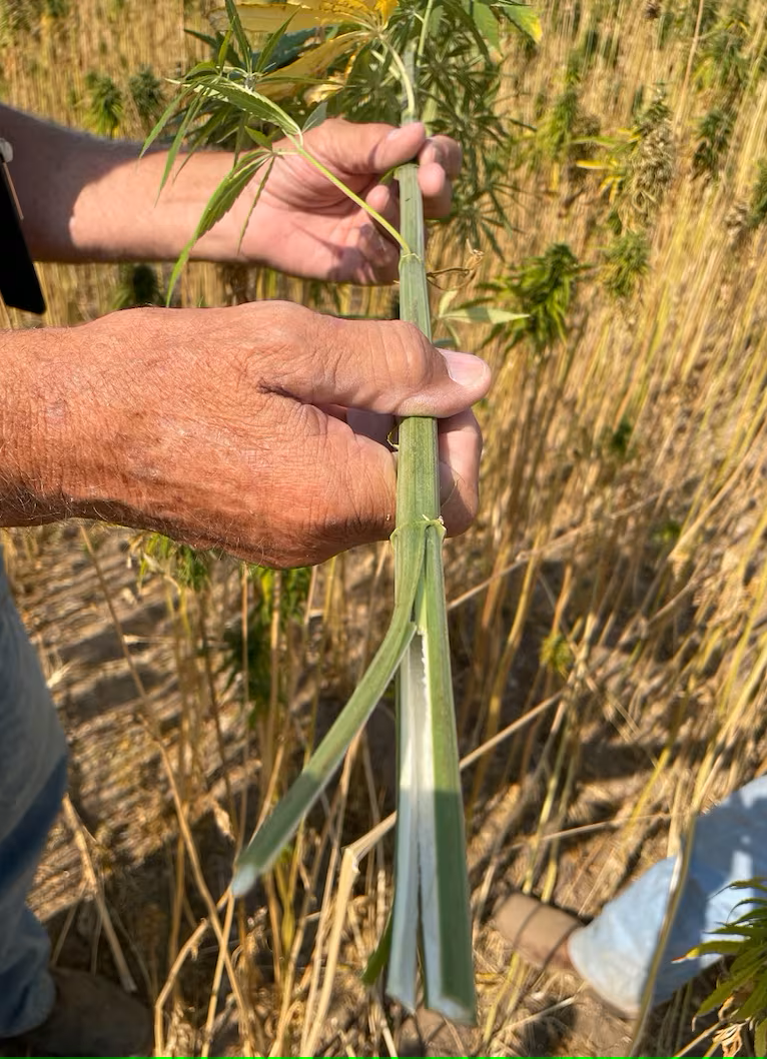






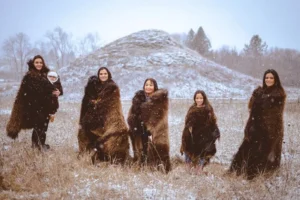


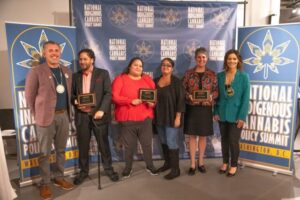

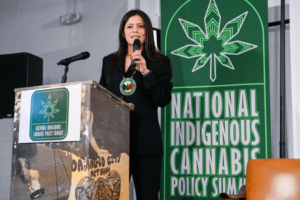
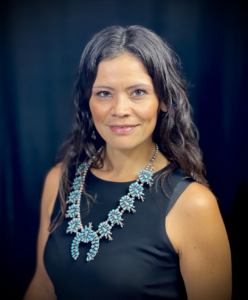
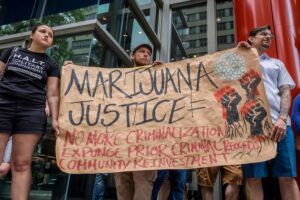

Comments are closed.